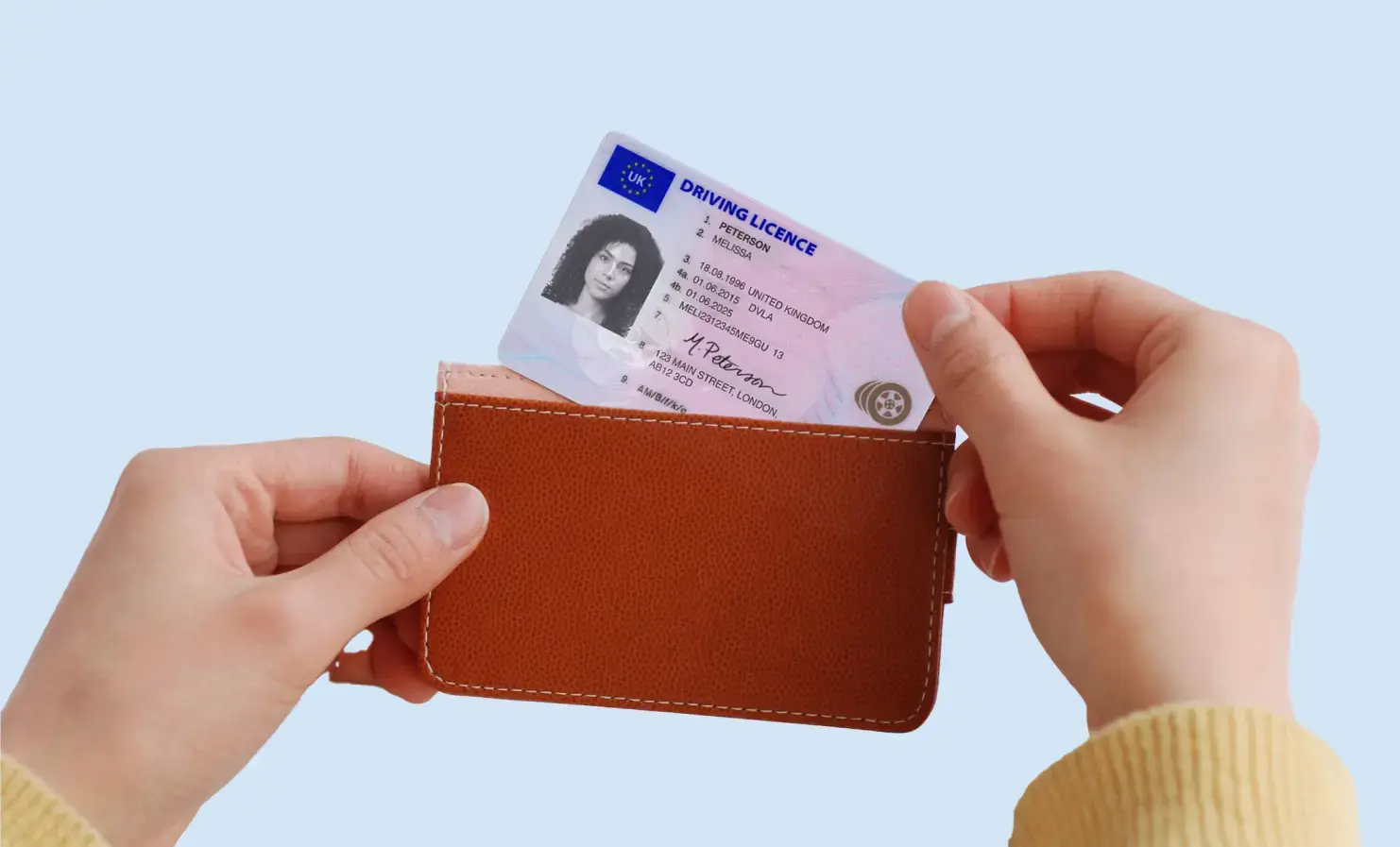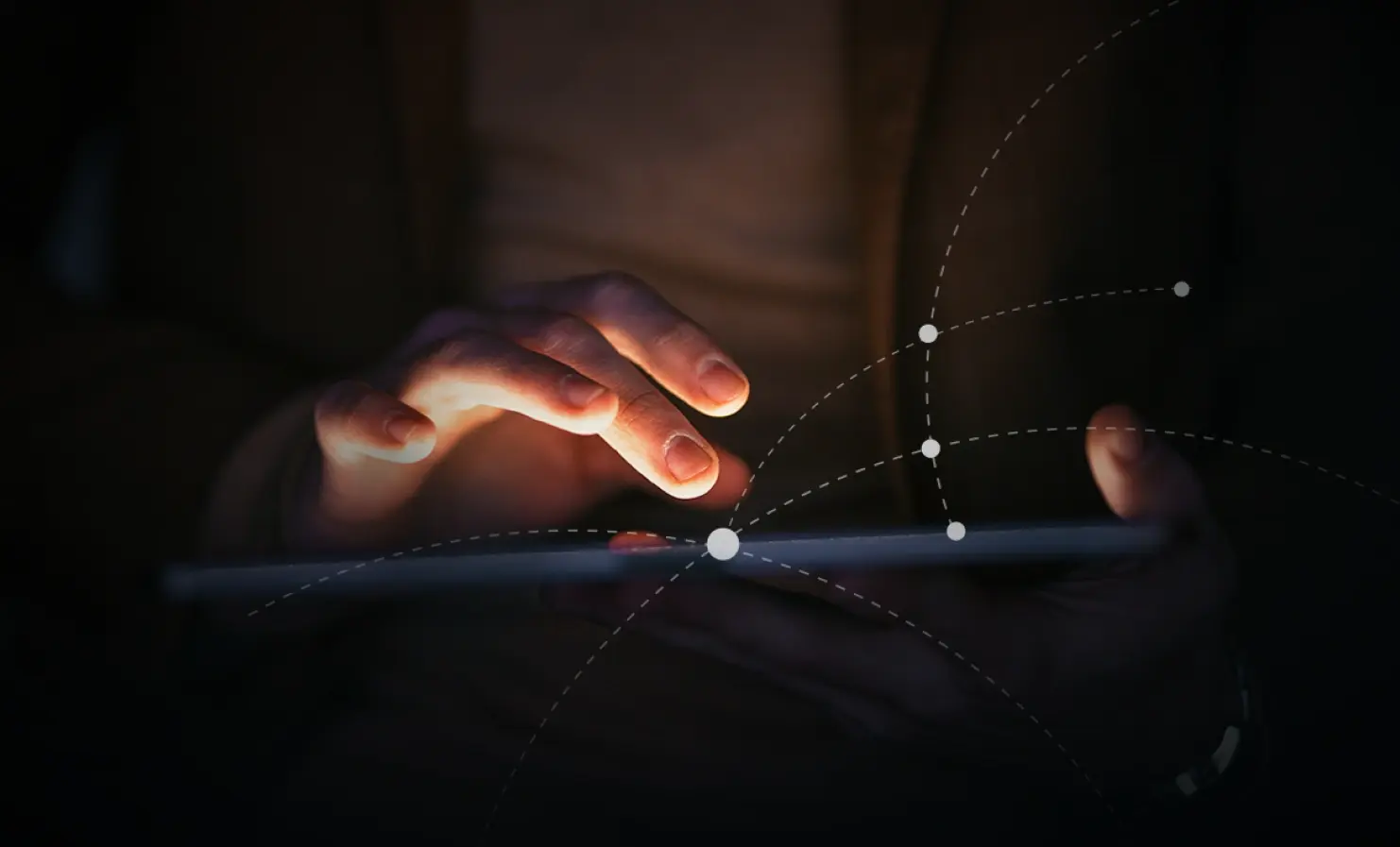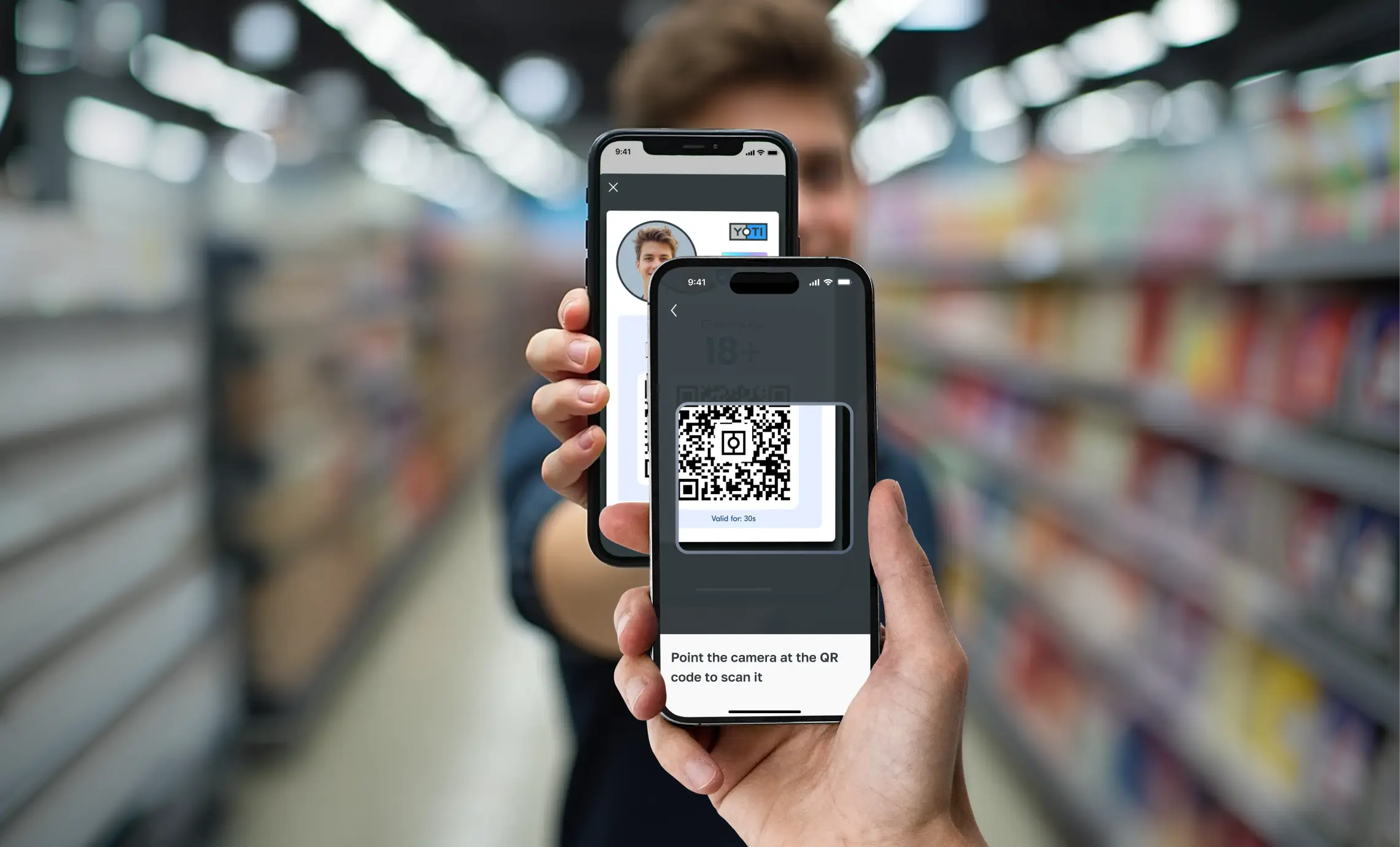
We’re swapping paper receipts for email confirmations, trading physical tickets for digital ones and many of us don’t even think twice about tapping our phones to pay. But there’s one thing most of us still carry around and use the old-school way: our ID.
Whether it’s your driving licence or a national ID card, chances are it’s tucked into your wallet, pocket (or even wedged into the back of your phone case). If you don’t have those, you might even need to take your passport around. It feels normal, and even necessary. But is it really the smartest way to prove who you are?
The risks associated with carrying and using physical IDs may not seem dramatic, but they’re very real, and often overlooked. We take a closer look at them and explore why digital alternatives are quickly becoming the smarter option.
Theft, loss and the hassle that comes with it
We’ve all been there: lost wallet, instant panic. And it’s not just your cards and cash that’s gone, it’s also your ID. It could be left in a bar, stolen when you’re on public transport or dropped after a night out. However it happens, a lost wallet means your identity is suddenly vulnerable.
Replacing a lost or stolen ID also means forms, fees and a whole lot of waiting. Physical IDs are magnets for loss and theft and usually, it’s hard to know exactly when or how it happened.
But once they’re gone, it’s a big risk. You might be able to file a police report or request a credit alert, but reversing the damage is tricky. In the hands of the wrong person, your physical ID can be used to impersonate you, open accounts or gain access to places or services they shouldn’t.
Identity fraud happens offline too
Digital security breaches tend to grab headlines, but physical IDs can be risky in the hands of someone with malicious intent.
A driving licence or passport is a goldmine of personal data. They contain information such as your full name, date of birth, address and ID number. Sometimes, that’s all someone needs to convincingly pretend to be you, especially if they’re doing so online.
Unlike digital IDs, physical IDs have no built-in security measures. Once someone has your ID, there’s no way to “lock” it. This leaves them to use it freely until you notice you’ve lost it and take action. By then, the damage is often already done.
You’re likely sharing more about yourself than you need to
Think about the last time you showed your physical ID. You might have done this to get into a venue, collect a parcel or maybe when buying alcohol. You probably only needed to prove one thing about yourself like your name or age.
But your physical ID instead revealed everything: your full name, date of birth, home address, ID number and maybe even your photo and signature.
That’s a lot of personal information to hand over for something so small. To prove you’re old enough to buy a drink, you shouldn’t need to share your home address. To watch an age-gated film at the cinema, you shouldn’t have to hand over your full identity. With physical IDs, you lose control over how much of your information is shared – it’s all or nothing.
You’ve got no control over who sees your data
Handing over a physical ID typically means surrendering control, even if it’s only temporarily. That person holding your ID has your private details in their hands. After you’ve handed it over, there’s a chance they can read it, copy it, photograph it or make a mental note of the information.
Most of the time, ID checks are innocent. But the reality is that there’s no real consent, visibility or accountability. You simply have to put your trust in a stranger that they’ll only look at the information they need. Every time your ID leaves your hand, there’s a privacy tradeoff happening behind the scenes. You have no way of knowing if your data is being stored, sold or entered into a system you never agreed to.
Physical IDs wear out (and it’s a pain to replace them)
Physical IDs don’t last forever. Ink fades, cards crack and paper documents get damaged. Worn IDs are likely to be rejected by scanners, bouncers or automated systems, which can be both inconvenient and frustrating. As time goes on, there’s also the issue of your image no longer looking like you currently do.
Replacing them also takes time and money. These physical vulnerabilities remind us of how dependent we are on plastic or paper IDs.
They’re easy to forget
It’s rare that we ever forget our phones when we leave the house. However, it’s much easier to forget your ID. Leaving your wallet at home could mean that you’re denied access to venues, unable to buy a drink or can’t prove your student status. It’s a hassle many of us are all too familiar with.
Moreover, if you need to verify your identity online, it usually means scanning, uploading, emailing or taking a photo of your physical ID. As more services move online, relying solely on a physical ID becomes a logistical challenge since you need to remember to carry it everywhere. All just to prove that you are who you say you are.
They can be misused (and sometimes you may never even know about it)
Beyond theft, there’s the risk of misuse. Sometimes it’s as simple as someone borrowing your ID “just for a second” or an old employee badge ending up in the wrong hands.
Physical IDs can be used by anyone and there’s often no way to tell where or when they’ve been used. For example, a dropped work ID pass could be used to gain unauthorised access to a secure building or swipe through security gates. Or a driving licence might be passed between multiple people for identification purposes, making it hard to trace who actually used it for what.
Companies don’t always handle your ID responsibly
Most responsible businesses should have solid processes in place to look after your data. But it’s not guaranteed that all businesses do.
Some organisations that work with IDs can often be inconsistent in how they handle them. Some may actually store your data securely. However, others may leave your information in filing cabinets, store it in unencrypted spreadsheets or keep it in systems that weren’t designed for privacy. Because physical IDs reveal everything at once, organisations often collect more data than they actually need, simply because it’s there.
Data protection regulations exist for a reason. However, once organisations have physical copies of your information, you have no way of knowing where it’s gone, how long it’s kept or who has access to it.
So, what’s the alternative?
More countries and services are accepting digital IDs. Our Digital ID is your ID on your phone and the instant way to prove who you are. To get one, all you need to do is set up your free Digital ID app with a valid identity document. You just have to do this once and then you have a secure Digital ID for life.
Our Digital IDs are built with privacy and security as a priority, giving you more control over your personal information. Key points you need to know are:
- You share only what’s needed (for example, an “over 18” credential to prove you’re an adult, instead of revealing your full date of birth, or even your exact age).
- You always give consent before any of your data is shared with an organisation that’s requesting an identity or age check.
- Only you can see who you’ve shared your data with
- Your data is encrypted to the highest standards using 256-bit encryption.
- You are the only person who can access your Digital ID (not even we can access it).
- Digital IDs are tied to your mobile device and secured with your personal biometrics. That means no-one can use it or access it without your permission.
You can take a look at our Digital ID privacy policy for more information.
Rethinking your ID and how you prove your identity
Many businesses still require you to show a physical ID. But as concerns about data privacy continue to rise, it’s worth asking: does this method of identification still serve us or does it quietly put us at risk?
Digital IDs give you the ability to prove only what’s necessary – and nothing more. That’s safer, smarter and better for your privacy. The next time you’re asked to present your ID to a business, ask if they’ll accept your Digital ID instead.
If you want to know more about our Digital ID, get in touch. Or, you can download and create your Digital ID on iOS or Android.



